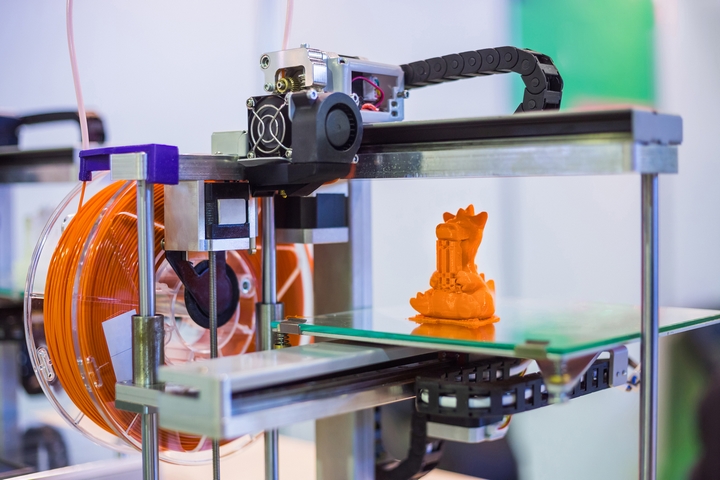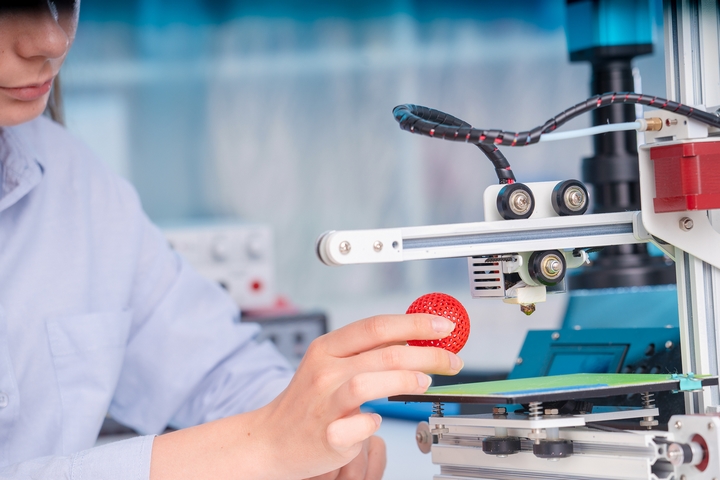The rapid prototyping process slashes the design-to-production time from the traditional months we are used to seeing to just weeks. Due to this process, you pay much less for rapid prototypes than you would for the conventional prototyping methods.
With the rapid prototyping process, you also get to test various materials and component geometries. This leads to many advantages and benefits for business across different industries. Here are the six benefits of the rapid prototyping process:
Benefit #1: Prototyping Speed

The rapid prototyping process typically involves 3D printing or additive manufacturing of parts. It reduces lead times on a range of geometrics and materials. Using sheet metal, CNC machining or turning, one can 3D print prototypes within a week.
A 3D printer uses 3D CAD model data to print a file, eliminating the need for extra machine set-up time. In traditional manufacturing, setting the production machine took a long time. This meant a considerable delay in the production of a prototype. By using 3D printing, a prototype can be available in a matter of hours.
For instance, an under four-inch diameter part could be printed in four hours, while one with a diameter of under eight inches could take twenty hours to print. What this means is that a 3D-printed part can be delivered in under a week. Consequently, as a result of prototyping speed, it’s possible to launch products much faster.
Benefit #2: Affordable Prototyping

One would think that the rapid prototyping process is expensive, especially considering the turnaround time. However, 3D printing is more affordable than the traditional manufacturing prototyping processes such as CNC machining.
With CNC machining, you incur additional costs on material procurement, as well as setting up, running and monitoring the machine. There are also costs involved in programming tool paths and adding finishes. Compare this lengthy process with 3D printing, where you only need to send a file to the printer, which interprets the CAD model data and then prints it. The printed part is then taken out of the printer for fine-tuning processes such as sandblasting.
SLS nylon is one of the most affordable 3D printing materials. You order your part today, and you have it delivered in just a couple of days. Depending on the complexity, a part measuring under 4 inches could cost you less than $100. And this is an extremely affordable prototype.
Benefit #3: Versatile Prototyping Designs

To arrive at the perfect prototype, engineers test a range of intricate designs. Under the traditional CNC machining processes, this was a costly and time-consuming affair.
With the rapid prototyping process, engineers can design and test several prototypes without breaking the bank. Today, 3D printing makes it possible for engineers to manufacture parts that would have been impossible to produce using old-school sheet metal fabrication or CNC machining. Besides, with 3D-printed parts, you don’t need specialized tools to make a prototype.
Using the layer-by-layer production method, you can produce parts featuring sharp corners and thin walls in record time. You can also easily create parts with areas that would be inaccessible to milling tools through the layer-by-layer manufacturing method that rapid prototyping employs. This is why this technology is known as additive manufacturing.
The ability to create part prototypes featuring different geometries allows designers to decide what trade-offs to make between the aesthetics and function of a part. This can conveniently be done when testing the prototype. After testing several prototypes, engineers can narrow their design to one that affords the best function of a part.
Benefit #4: Consolidating Parts

With the rapid prototyping process, an engineer gets to test isolated parts that are later assembled for end use. The traditional machining prototyping technology was very prohibitive when combining multiple fabricated or machined parts during the prototyping process.
With rapid prototyping, the consolidation process is more cost effective. It also allows engineers to experiment with various designs and part function.
Besides, using 3D printing processes like Selective Laser Sintering (SLS), Carbon DLS™, HP Multi Jet Fusion (HP MJF), and Direct Metal Laser Sintering (DMLS), you can drastically reduce product development costs for suitable end-use parts by consolidating them during the production and prototyping stage.
Benefit #5: Prototyping Testing

With 3D printing, designers can use the rapid prototyping process to test prototypes using various materials. By testing one material after another, they can easily settle on the best material for form, function, and aesthetics before finally releasing it into the end-part environment.
Among popular 3D-printed materials is Nylon 12, which is used in HP, MJF and SLS. It can withstand temperatures of over 300°F (149°C). Another popular material is Aluminum AlSiMg. This is a metal composite that can easily absorb the temperatures and stresses associated with the production of automotive components.
Some parts require unique designs that combine various colours, materials, and finishes. Luckily, there are 3D printing platforms that feature more than 200 colours and material combinations and finishes.
Benefit #6: Risk Mitigation

When a part finally rolls into the machines for mass production, making alterations at this stage can be very costly and disruptive. With rapid prototyping, this won’t happen since the design you have in your hand has been tested and re-tested for end-part form and function.
Since you can actually see the “part” or the design, the risks that the end part will be faulty are minimized or completely eliminated. This way, the production costs are lower.
Besides, 3D printing is very affordable and comes with minimal financial risk. The 3D printing company will likely absorb extra costs if they alter your design. You only pay for what you ordered. The process is up to the 3D printing company.




